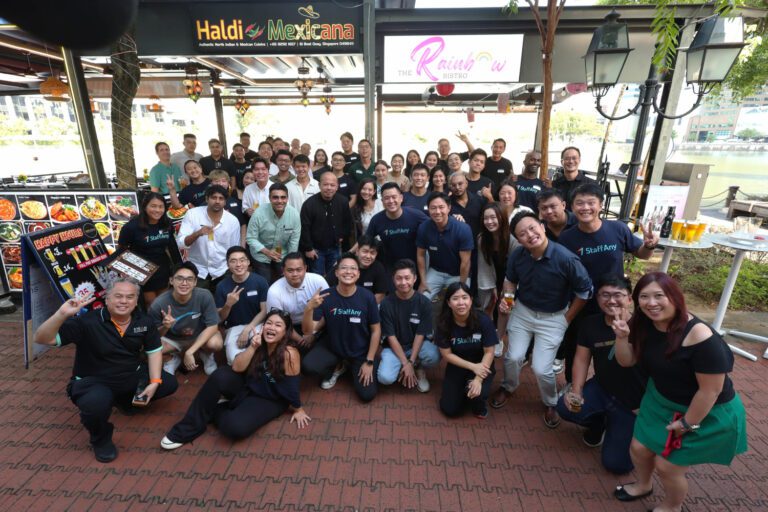We all know how tough it is to run an F&B business nowadays, especially in Singapore, where consumers are constantly bombarded with food advertisements and spoilt with abundant food choices. In a McKinsey study in 2014, researchers discovered that Singaporeans have twice as many dining options as compared to people in Hong Kong on a per capita basis. In addition, one out of three F&B outlets are replaced every year. Having a nicely renovated and cosy cafe just isn’t enough anymore. A lot of other factors come into play – food quality, store environment, outlet reviews – you name it. As such, many companies have hopped onto the social media bandwagon in the hopes of getting a wider audience reach. But here comes the question – how do I make my F&B store stand out from the rest in the sea of marketing messages?
The answer – taking nice photographs of your food products! Humans are innately visual, and having a creative and eye-catching Instagram feed will probably help your store in attracting more eyeballs or even gain a steady following. This could highly increase the chances of people patronising your store as it could help consumers better visualise their dining experience and help them arrive at a decision before visiting your store.
Here are some tips for taking drool-inducing photographs for your F&B business:
1. Determine the angle
Find the angle that can best capture that very element which makes your food product unique. The top view, side view – or you can even get creative with a close-up!
2. Avoid artificial light if possible
Getting accurate colours in food photography is essential. Natural lighting is the key to taking beautiful still life photos. But that doesn’t mean shooting under the bright sunlight. Photographing under intense sunlight can cast harsh shadows on your food and lead to exposure issues – which means more editing work! Instead, aim for the natural light from your windows. Stay away from artificial light to avoid an orangey tint in your food, especially in white-coloured rice grains or even your white table cloth.
3. Choose a complementing background
Choose a background which does not take your viewer’s attention away from your product. It may sound like common sense, but it can be overlooked while ornamenting your background. The background does not have to be entirely plain and boring. You can make use of these three common food photography backgrounds:
- Wood: A wooden background goes well with just about anything due to its neutral tone.
- Dark colours: Go well with dark-coloured food
- Light colours: Go well with light-coloured food
The key is to aim for subtle, neutral colours for your backdrop. You can get creative and use other furniture from your store – a rug or even your floor. The list is only limited to your imagination.
4. Decorate your background
You could also consider adding small ornaments to the background to make your shot more interesting. Some common objects include:
- Dry ingredients such as herbs and spices
- Flower petals
- Pebbles
- Cutlery or cooking utensils
- Berries, nuts
- Broken chocolate pieces
5. Food composition
Food presentation plays a huge role in forming a customer’s first impression. That goes the same for food photography as well – getting the perfect composition of your food product is essential to taking drool-inducing photos. Arrange your food neatly to achieve visual balance. Spot patterns and experiment with them as it can offer you a unique way to present your food.
6. Make use of photo editing
Most of the time, our cameras and phones will not be able to entirely capture what we had intended to. But the good news is, you do not need to be a Photoshop guru to be able to edit photos well. Photo editing apps now come with plenty of features and abilities. From spot correctors to level adjusters all in one app, enhancing your photographs have never been easier. Here are some recommended photo editing apps:
- Adobe Photoshop Express: A simplified version of Adobe Photoshop. Allows for colour correction and one-touch adjustments for easy use. Contains an image resize feature.
- Adobe Photoshop Lightroom: Allows for more complex tweaks.
- VSCO: For natural looking filters.
You could work on enhancing the colours of your photographs to bring out or mute certain colours or objects to help convey the mood behind your photo even better.
7. Tell a story
Plan ahead and think of the message that you are trying to convey. Every business is based on human connections. Leverage on that and tell a story. People are naturally drawn to what is happening to the people around them. Adding props (like a book, laptop or even your own arm) can give an interesting touch to your photo.
8. Use a tripod
Last but not least, do not underestimate the use of a tripod. It is the secret to taking blur-free and sharp photos. A little goes a long way. Besides that, you now have the option for overhead shots too!
Although nice food photographs do not guarantee immediate success for your F&B business, there is definitely no harm in giving potential customers an exceptional and lasting impression of your F&B store! Aesthetic photographs are share-worthy and are definitely great conversation starters for most. By providing a platform to showcase what you can offer to potential patrons, you too encourage and provide a platform for existing customers to document their dining experience at your store.
We hope that these food photography tips could help your F&B business achieve your goals sooner. Come visit us to find out more about how we can help your F&B business even further! 🙂
www.staffany.com











